| Listing 1 - 9 of 9 |
Sort by
|
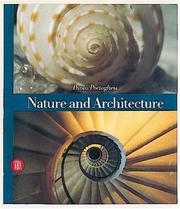
ISBN: 8881186586 9788881186587 Year: 2000 Publisher: Milano Skira
Abstract | Keywords | Export | Availability | Bookmark
 Loading...
Loading...Choose an application
- Reference Manager
- EndNote
- RefWorks (Direct export to RefWorks)
"Nature," wrote Novalis in a poem of Fragments, "is a magical city frozen in stone." This book, instead, considers architecture as the magical transcription of the shapes and laws of nature into the artificial universe of the city. Following on in the wake of modern art's urge to conjure up the primordial paths of expressionism, this book explores the natural origin of architectural archetypes: the column, the house, the wall, the door, the temple, the tower, etc. No matter the age or civilisation, all these elements are eternally present in the building activities of mankind. Evolving from research carried out in the sixties, this book not only examines the differences and similarities between natural and architectural forms, but it also draws comparisons between natural forms and the precepts and ideas that over the centuries have characterised the architecture of different cultures, not so much in order to highlight a manifest naturalistic inspiration but rather to comprehend the unity to which the human mind and the secret order of natural forms both belong. While acknowledging the central role of ecology, this book refers to the extraordinary achievements of science, especially the one that goes by the name of "new paradigm," to show architecture the way in which continuity and innovation can finally unite. An architecture which, fuelled by the spirit of a new alliance, becomes again the art of inhabiting the earth, putting aside its role as instrument and emblem of that thirst for dominion and violence enunciated by Bacon. A feminine architecture, far from the arrogance of the Babelic twilight years of the 20th century.
Architecture --- anno 1900-1999 --- Architectural design --- Nature (Aesthetics) --- Design architectural --- Nature (Esthétique) --- Philosophy --- Environmental aspects --- Philosophie --- Aspect de l'environnement --- Nature (esthétique) --- 72.012/013 --- 57 --- Zoömorfe architectuur --- Organische architectuur --- Organisch bouwen --- Natuur --- Architectuur en natuur --- Natuurvormen als inspiratie voor architecturale vormen --- Architectuurbeschouwing ; P. Portoghesi over natuur en architectuur --- 72.013 --- Proportie (architectuur) --- Ontwerp (architectuur) --- Architectuurontwerp --- Architectonisch ontwerp --- Biologie --- Architectuur ; proportie, symmetrie, harmonie --- Nature (Esthétique) --- natuur --- Architectuur --- Design architectural. --- Philosophie. --- Aspect environnemental. --- Nature (esthétique) --- Aspect environnemental
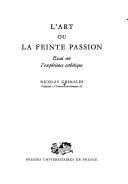
ISBN: 2130379532 9782130379539 Year: 1983 Publisher: Paris: PUF,
Abstract | Keywords | Export | Availability | Bookmark
 Loading...
Loading...Choose an application
- Reference Manager
- EndNote
- RefWorks (Direct export to RefWorks)
Aesthetics of art --- Literature --- Aesthetics --- Imitation in art --- Nature (Aesthetics) --- Esthétique --- Imitation dans l'art --- Nature (Esthétique) --- Art and nature --- Nature and art --- Art --- Pictures --- Appropriation (Art) --- Mimesis in art --- Beautiful, The --- Beauty --- Esthetics --- Taste (Aesthetics) --- Philosophy --- Criticism --- Proportion --- Symmetry --- Reproduction --- Copying --- Psychology --- Aesthetics. --- Imitation in art. --- Nature (Aesthetics). --- Esthétique --- Nature (Esthétique) --- Radio broadcasting Aesthetics
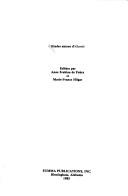
ISBN: 0917786092 9780917786099 Year: 1985 Publisher: Birmingham (Ala.): Summa,
Abstract | Keywords | Export | Availability | Bookmark
 Loading...
Loading...Choose an application
- Reference Manager
- EndNote
- RefWorks (Direct export to RefWorks)
Apollinaire, Guillaume --- Nature (Aesthetics) --- Aesthetics, French --- Literature --- Poetics --- History and criticism --- Theory, etc --- History --- Rousseau, Jean Jacques --- Aesthetics --- Rousseau, Jean-Jacques --- Nature (Esthétique) --- Nature (Esthétique) --- Littérature --- Esthétique --- Rousseau, Jean-Jacques, --- Apollinaire, Guillaume, --- Aesthetics. --- Aesthetics, French - 18th century --- Literature - History and criticism - Theory, etc --- Poetics - History - 18th century --- Apollinaire, Guillaume, - 1880-1918. - Alcools
Book
ISBN: 0582443784 Year: 1979 Publisher: London
Abstract | Keywords | Export | Availability | Bookmark
 Loading...
Loading...Choose an application
- Reference Manager
- EndNote
- RefWorks (Direct export to RefWorks)
General biochemistry --- General ecology and biosociology --- Biochemistry --- Chemical ecology --- Environmental chemistry --- Chemistry, Environmental --- Chemistry --- Ecology --- Chemoecology --- Metabolites --- Biological chemistry --- Chemical composition of organisms --- Organisms --- Physiological chemistry --- Biology --- Medical sciences --- Composition --- Chemosensory ecology --- MARINE AREAS --- INSECTS --- PLANTS --- STEROLS --- INVERTEBRATES --- PHEROMONES --- ANTIBIOTICS --- VENOMS --- MYCOTOXINS --- PHYTOTOXINS --- CHEMICAL COMPOUNDS --- NATURE (ESTHETIQUE) --- MANUALS --- CHEMICAL ECOLOGY --- NATURAL PRODUCTS --- TOXINS --- STEROIDS --- POLLUTION --- INTERACTIONS --- NATURE
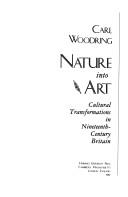
ISBN: 0674604652 0674594029 0674594037 Year: 1989 Publisher: Cambridge, Mass. Harvard University Press
Abstract | Keywords | Export | Availability | Bookmark
 Loading...
Loading...Choose an application
- Reference Manager
- EndNote
- RefWorks (Direct export to RefWorks)
English literature --- Thematology --- Art --- anno 1800-1899 --- Great Britain --- Art and literature --- Art for art's sake (Movement) --- Nature (Aesthetics) --- Art, British --- Littérature anglaise --- Art et littérature --- Art pour l'Art (Mouvement) --- Nature (Esthétique) --- Art britannique --- History and criticism. --- History --- Histoire et critique --- Histoire --- Grande-Bretagne --- Civilization --- Civilisation --- Art for art's sake (Movement). --- Nature (Aesthetics). --- Littérature anglaise --- Art et littérature --- Nature (Esthétique) --- British culture, 1837-1901
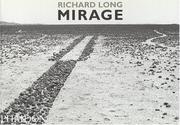
ISBN: 0714837792 Year: 1998 Publisher: Londres Phaidon Press
Abstract | Keywords | Export | Availability | Bookmark
 Loading...
Loading...Choose an application
- Reference Manager
- EndNote
- RefWorks (Direct export to RefWorks)
Nature (Aesthetics) --- Stone in art --- Circle in art --- Earthworks (Art) --- Sculpture, English --- Nature (Esthétique) --- Pierre dans l'art --- Cercle dans l'art --- Land art --- Sculpture anglaise --- Exhibitions. --- Exhibitions --- Expositions --- Long, Richard, --- Nature (Esthétique) --- 7.071 LONG, RICHARD --- Creatieve en vertolkende bezigheden in verband met kunst. Activiteiten van beroepsartiesten--LONG, RICHARD --- 7.039*1 --- 77 --- Rock balancing --- 77 Fotografie --- Fotografie --- 7.039*1 Minimal arts. Objectkunst --- Minimal arts. Objectkunst --- Art --- Long, Richard --- Landart
Book
ISBN: 9789042932333 9042932333 Year: 2016 Volume: 2 Publisher: Leuven Paris Bristol, CT Peeters
Abstract | Keywords | Export | Availability | Bookmark
 Loading...
Loading...Choose an application
- Reference Manager
- EndNote
- RefWorks (Direct export to RefWorks)
During the Late Middle Ages a unique type of 'mixed media' recycled and remnant art arose in houses of religious women in the Low Countries: Enclosed Gardens. These are retables, sometimes with painted side panels, the central section filled not only with narrative sculpture, but also with all sorts of trinkets and hand-worked textiles. Adornments include relics, wax medallions, gemstones set in silver, pilgrimage souvenirs, parchment banderoles, flowers made from textiles with silk thread, semi-precious stones, pearls and quilling (a decorative technique using rolled paper). The ensemble is an impressive and one-of-a-kind display and presents as an intoxicating garden. In this essay the exceptional heritage of such Enclosed Gardens is interpreted from a range of approaches. The Enclosed Garden is studied as a symbol of paradise and mystical union, as the sanctuary of interiority, as the sublimation of the sensorium (in particular the sense of smell), as a typical gendered product, and as a centre of psycho-energetic creative processes.0.
altarpieces --- iconology --- paradise [doctrinal concept] --- Iconography --- Art --- anno 500-1499 --- Art and nature --- Art et nature --- Kunst en natuur --- Nature (Aesthetics) --- Nature (Esthétique) --- Nature dans l'art --- Nature in art --- Natuur (Esthetica) --- Natuur in de kunst --- Paradijs in de kunst --- Paradis dans l'art --- Paradise in art --- Rôle selon le sexe dans l'art --- Seksuele rolpatronen in de kunst --- Sex role in art --- Altarpieces --- Christian art and symbolism --- Retables --- Art et symbolisme chrétiens --- Art et symbolisme chrétiens --- Benelux countries --- Belgium --- Mechelen (Belgium) --- Themes, motives --- gender
Book
ISBN: 0521249406 0521270901 Year: 1984 Publisher: Cambridge
Abstract | Keywords | Export | Availability | Bookmark
 Loading...
Loading...Choose an application
- Reference Manager
- EndNote
- RefWorks (Direct export to RefWorks)
Comparative literature --- History of civilization --- Thematology --- French literature --- anno 1700-1799 --- France --- Europe --- Nature (Aesthetics) --- Nature in literature --- Littérature française --- Nature (Esthétique) --- Nature dans la littérature --- History and criticism --- Histoire et critique --- Civilization --- French influences --- Civilisation --- Influence française --- 930.85.48 <44> --- Cultuurgeschiedenis: Verlichting; Aufklärung--Frankrijk --- Natural history --- Nature in literature. --- History and criticism. --- Historiography. --- Nature (Aesthetics). --- 930.85.48 <44> Cultuurgeschiedenis: Verlichting; Aufklärung--Frankrijk --- Littérature française --- Nature (Esthétique) --- Nature dans la littérature --- Influence française --- Nature in poetry --- Art and nature --- Nature and art --- Aesthetics --- History, Natural --- Natural science --- Physiophilosophy --- Biology --- Science --- Historiography --- French influences. --- Thematologie --- Vergelijkende letterkunde --- Franse letterkunde --- Cultuurgeschiedenis --- Frankrijk --- Europa --- Nature --- Nature dans l'art --- 18e siecle --- Aspect esthetique
Book
ISBN: 3000027602 9783000027604 Year: 2004 Publisher: Neuss: Stiftung Insel Hombroich,
Abstract | Keywords | Export | Availability | Bookmark
 Loading...
Loading...Choose an application
- Reference Manager
- EndNote
- RefWorks (Direct export to RefWorks)
Le musée en plein air se trouve au milieu d’une zone naturelle protégée de 21 hectares, avec dix sculptures à voir, dont certaines sont même utilisées comme bâtiments d’exposition. Afin de rendre l’art et la nature perceptibles par les sens, aucun éclairage artificiel n’est utilisé, pas plus que des panneaux, légendes, barrières ou toute autre forme de didactique. La collection se concentre sur le modernisme européen, des artéfacts archéologiques des débuts de l’Histoire à nos jours ainsi que sur des objets d’Asie de l’Est. Dans les bâtiments et sur le site de l’Île-musée de Hombroich, la collection est une installation permanente qui peut être admirée dans la lumière changeante du jour et au gré des variations des saisons. Le site de l’Île-musée de Hombroich a été réalisé par l’architecte paysagiste Bernhard Korte sous la forme d’un paysage idéal, qui tient également compte de la topographie et de l’histoire du lieu. Le cœur est constitué par l’île historique de Hombroich, un parc datant du début du XIXe siècle et situé entre les bras de l’Erft, à l'Ouest de l'Allemagne. L’île d’Hombroich un royaume de jardin, un pays de rêve où l’art et la nature se sont liés.Dans une prairie de l’Erft réaménagée, les visiteurs rencontrent des sculptures et des œuvres d’art de cultures lointaines, de modernité classique et d’art contemporain. Karl-Heinrich Müller a capté cette utopie ici - il est le seul à avoir pu réaliser ces nombreuses images, et mettre en parallèle ses amis artistes avec les structures végétales, le paysage et les œuvres d’art. La caractéristique de Hombroich est difficile à décrire, c’est aussi la raison pour laquelle on n'en fait pas de publicité. La magie n’est pas négociable.Ce qui a été créé ici, c’est la preuve de l’amour et de la passion de tous les participants, en particulier desartistes.Cela ne se découvre que si vous vivez, quand vous vous ouvrez.La conséquence de cette idée est que les bâtisseurs de ce paysage muséal ont décidé de ne pas faire de signalisation. La préparation didactique est perçue comme néfaste pour l’accueil autonome de l’art et de la nature. Les tentatives d’interprétation affectent la perception libre et sensuelle voulue des objets. Pour les mêmes raisons, il n’y a pas de visites guidées d’historiens de l’art. Si l’on souhaite quand même une visite guidée, on obtient des adresses de jeunes artistes proches de l’île et dont le leadership couvre plus le domaine artistique que l’histoire de l’art.L’île réunit de nombreuses personnes très différentes, en particulier des artistes et desscientifiques. Mais qu’est-ce qui les unissent ? C’est la façon dont les gens se sont retrouvés. Ils estiment que la conception de l’île est tournée vers l’avenir. Vous avez contribué à remplir l’ensemble et à le poursuivre. La jeune génération d’artistes s’est réunie dans une ancienne station de missiles près du site insulaire d’origine, où elle peut développer l’ensemble du projet de l’île à sa manière. L’île est pour les artistes un espace de liberté où l’on aime les alentours et en tant qu’artiste [...]
museology --- Museology --- Art --- art [fine art] --- Nishikawa, Katsuhito --- Fautrier, Jean --- Corinth, Lovis --- Graubner, Gotthard --- Tadeusz, Norbert --- Rosso, Medardo --- Calder, Alexander --- Arp, Hans --- Kirkeby, Per --- Klimt, Gustav --- Moskopp, Ulrich --- Heerich, Erwin --- Picabia, Francis --- Kelly, Ellsworth --- Herzfeld, Anatol --- Klein, Yves --- Cézanne, Paul --- Suvero, di, Mark --- Leck, van der, Bart --- Matisse, Henri --- Schwitters, Kurt --- Kruse, Oliver --- Brancusi, Constantin --- Museum Insel Hombroich [Neuss] --- Germany --- musea --- museums [buildings] --- ruimtelijke kunst --- Neuss --- Museum Insel Hombroich (Neuss) --- Langen Foundation (Neuss) --- Kunst en landschapsarchitectuur --- Museumarchitectuur ; E. Heerich ; Museum Insel Hombroich (1987) --- Museumcatalogi ; kunstverzamelingen ; Neuss ; Insel Hombroich --- 069(430) --- Musea. Collecties ; Duitsland --- Abraham, Raimund --- Ando, Tadao --- Baumüller, Heinz --- Chillida, Eduardo --- site-specific works --- Ile --- Musée de plein air --- Paysage environnement --- Parc d'exposition --- Korte, Bernhard --- Neuss (Allemagne) --- Museum Insel Hombroich (Neuss). --- Langen Foundation (Neuss). --- Neuss. --- art [discipline] --- museumcollectie --- ARCHITECTURE --- MUSEES (EDIFICES) --- NATURE (ESTHETIQUE) --- ASPECT DE L'ENVIRONNEMENT --- ALLEMAGNE --- (spelen met) poppen. --- poppentheater. --- onderwijs, wetenschap en studie.
| Listing 1 - 9 of 9 |
Sort by
|

 Search
Search Feedback
Feedback About UniCat
About UniCat  Help
Help News
News